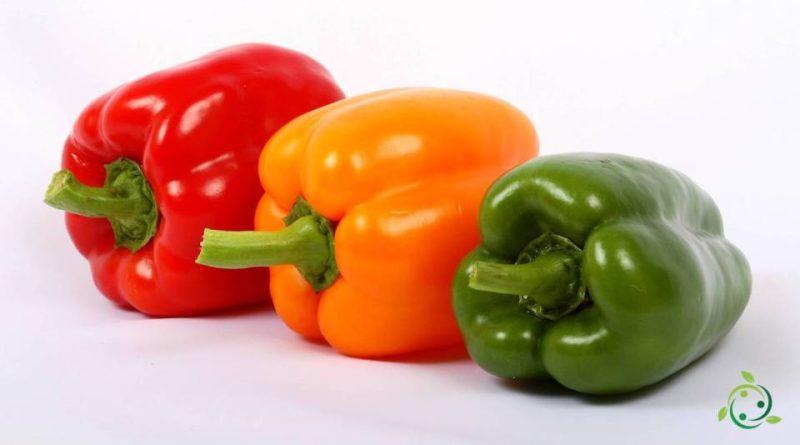Nutritional value of sweet pepper
Nutritional value of sweet pepper
The term pepper refers to the berry obtained from some varieties of the most cultivated species in the world (Capsicum annuum L.). This plant is used as a vegetable and vegetable.
Features –
Sweet pepper, together with hot peppers, is one of the varieties of Capsicum annuum and is, as mentioned, the most cultivated in the world among the five main species of the Capsicum genus. In addition to many cultivars, it also includes C. annuum var. aviculare (chiltepin), considered by many to be the wild subspecies closest to the common ancestor of all species, which evolved between Brazil and Bolivia, as it boasts the largest range: Peru, the Caribbean, Argentina, reaching as far as Texas, Florida, California, Louisiana and Arizona.
It was the Aztecs who, by the time the Spaniards arrived in Mexico, had developed dozens of varieties of C. annuum, according to the historian Bernardino de Sahagún who lived around 1529.
Currently C. annuum is the main cultivated species in China, Korea, India, Italy, Mexico, the Malaysian archipelago, Hungary.
The varieties of peppers differ in the shape of the fruits that can have elongated, conical, prismatic and even globe conformation, smooth or ribbed surfaces, colors from green to violet and a taste that can be both acrid and sweet.
Nutritional factsheet –
Peppers are eaten either fresh, raw or cooked, but also dried in some cases.
Although coming from the same genus of plants, pepper differs from chilli because it does not contain capsaicin, which is instead responsible for the spiciness of chilli: therefore a pepper has a zero value on the Scoville scale, the scale of measurement of spiciness.
Obviously, the nutritional values of sweet pepper are reported here, which can vary according to the different varieties; the values shown below are the average of the varieties known as “yellow pepper”, “red pepper” and “green pepper”, per 100 g of food:
on average, therefore, 100 g of raw sweet pepper provide about 25 Calories divided as follows:
– 72% carbohydrates;
– 16% proteins;
– 12% lipids;
in detail, in 100 grams of raw pepper there are:
– 92.21 g of water;
– 6.03 g of carbohydrates;
– 2.1 g of fiber;
– 0.99 g of protein;
– 0.30 g of lipids (including: 0.027 g of saturated fat, 0.004 g of monounsaturated fat and 0.070 g of polyunsaturated fat);
– 3131 IU of vitamin A;
– 0.05 mg of vitamin B1;
– 0.07 mg of vitamin B2;
– 127.7 mg of vitamin C;
– 1.58 mg of vitamin E;
– 0.979 mg of niacin;
– 0.291 mg of pyridoxine;
– 0.085 mg of riboflavin;
– 0.054 mg thiamine;
– 46 µg of folate;
– 4.9 µg of vitamin K;
– 211 mg of potassium;
– 26 mg of phosphorus;
– 12 mg of magnesium;
– 7 mg of calcium;
– 4 mg of sodium;
– 0.43 mg of iron;
– 0.25 mg of zinc;
– 0.112 mg of manganese;
– 0.017 mg of copper;
– 0.1 µg of selenium.
The pepper is also a source of alpha- and beta-carotene, beta-cryptoxanthin and lutein-zeaxanthin.
Obviously the above data are influenced by the cultivation soil, by the method (organic or conventional, etc.) and by the pedoclimatic characteristics.
Property –
Sweet pepper, thanks to the high content of vitamins, minerals and antioxidants, has a beneficial effect on heart health. Lowers bad LDL cholesterol levels, raises good HDL cholesterol levels and improves blood pressure. It is therefore excellent in the prevention of cardiovascular diseases such as heart attacks, strokes or thrombosis.
Therefore, the consumption of sweet pepper helps to protect health by stocking up on antioxidants. In particular, sweet peppers are a source of manganese and selenium (cofactors for enzymes with antioxidant action), vitamin A (important for the health of skin, mucous membranes and sight), vitamin E and vitamin C (ally of the immune system) . Furthermore, vitamin C is involved in the synthesis of collagen and therefore promotes good health of the skin, blood vessels, bones and other organs and tissues. The vitamins of group B, on the other hand, favor good metabolism; in particular, folate favors the correct development of the nervous system during gestation. Finally, potassium helps protect cardiovascular health.

